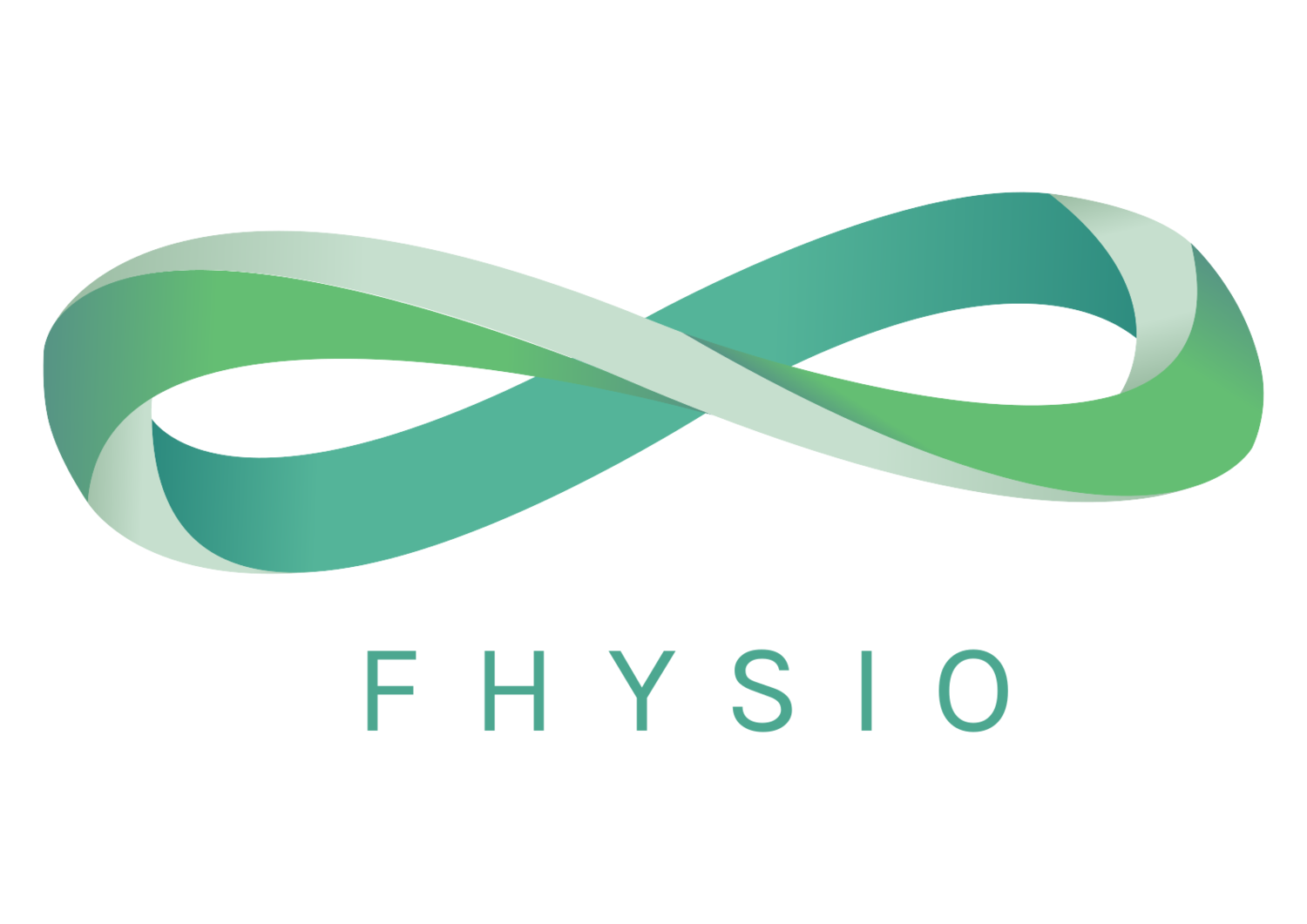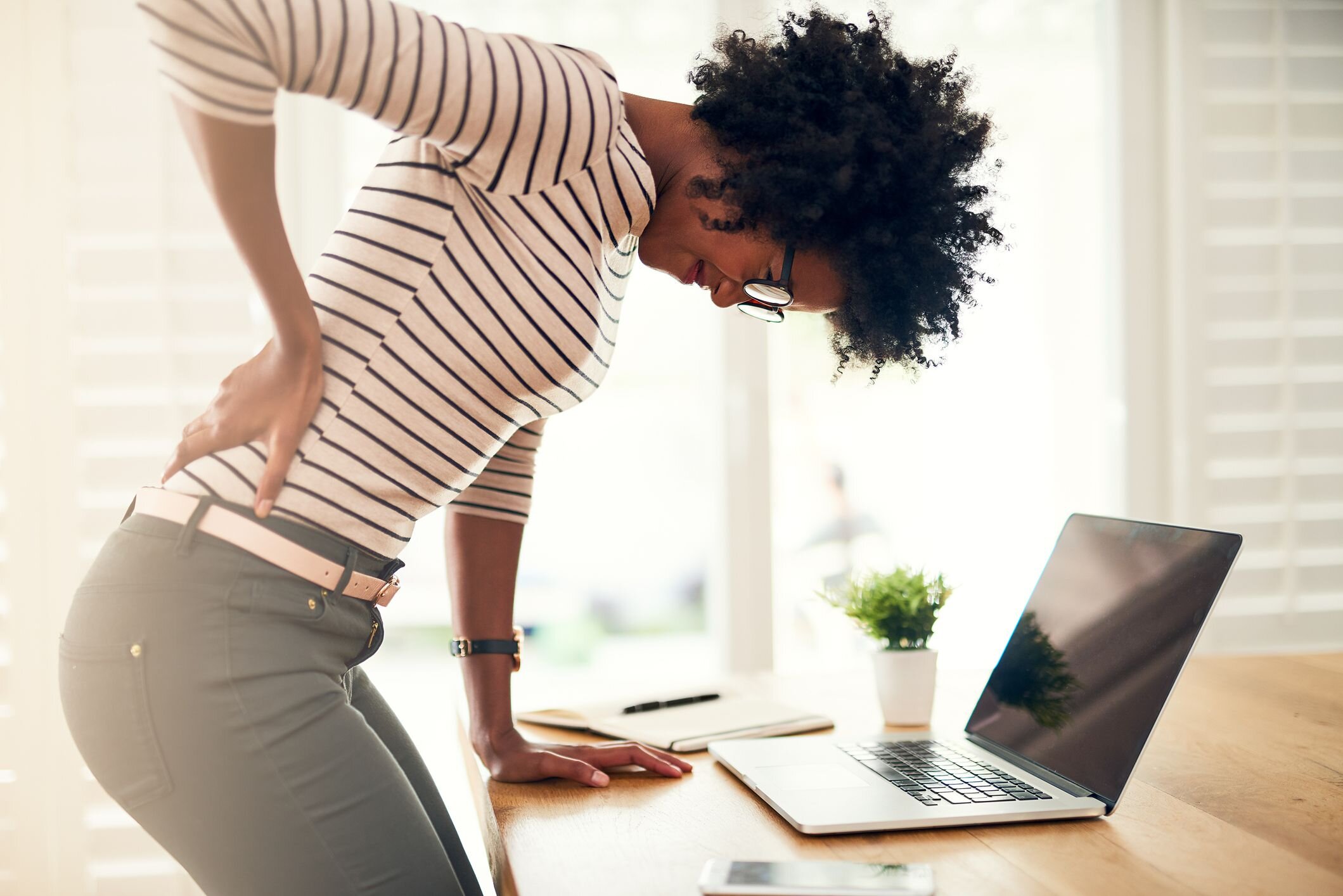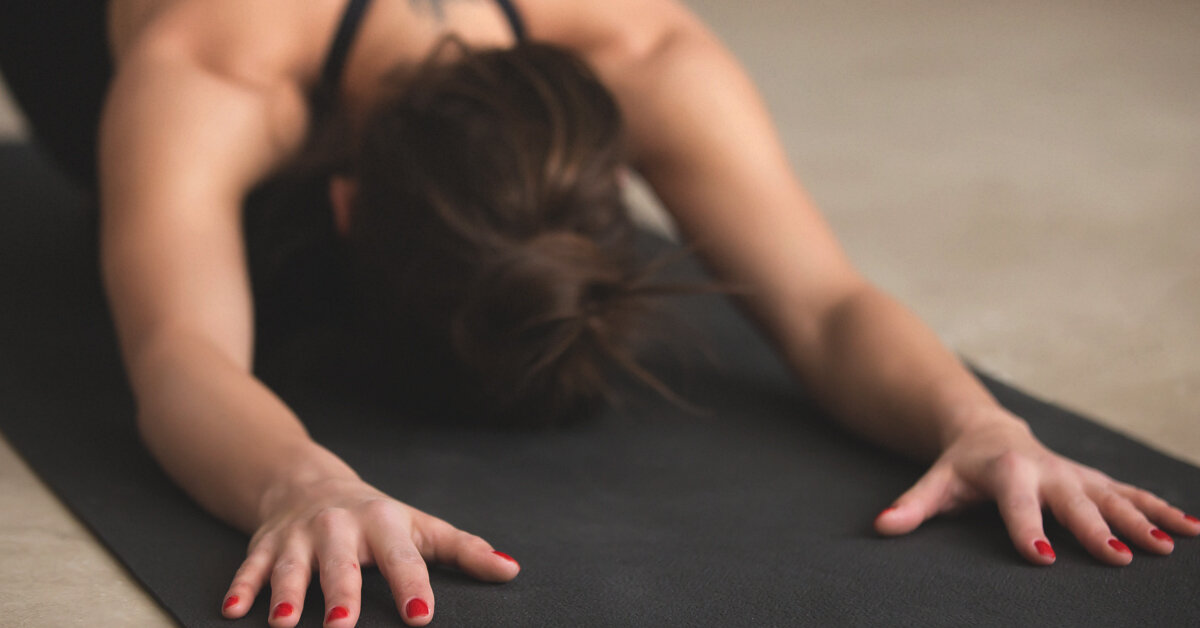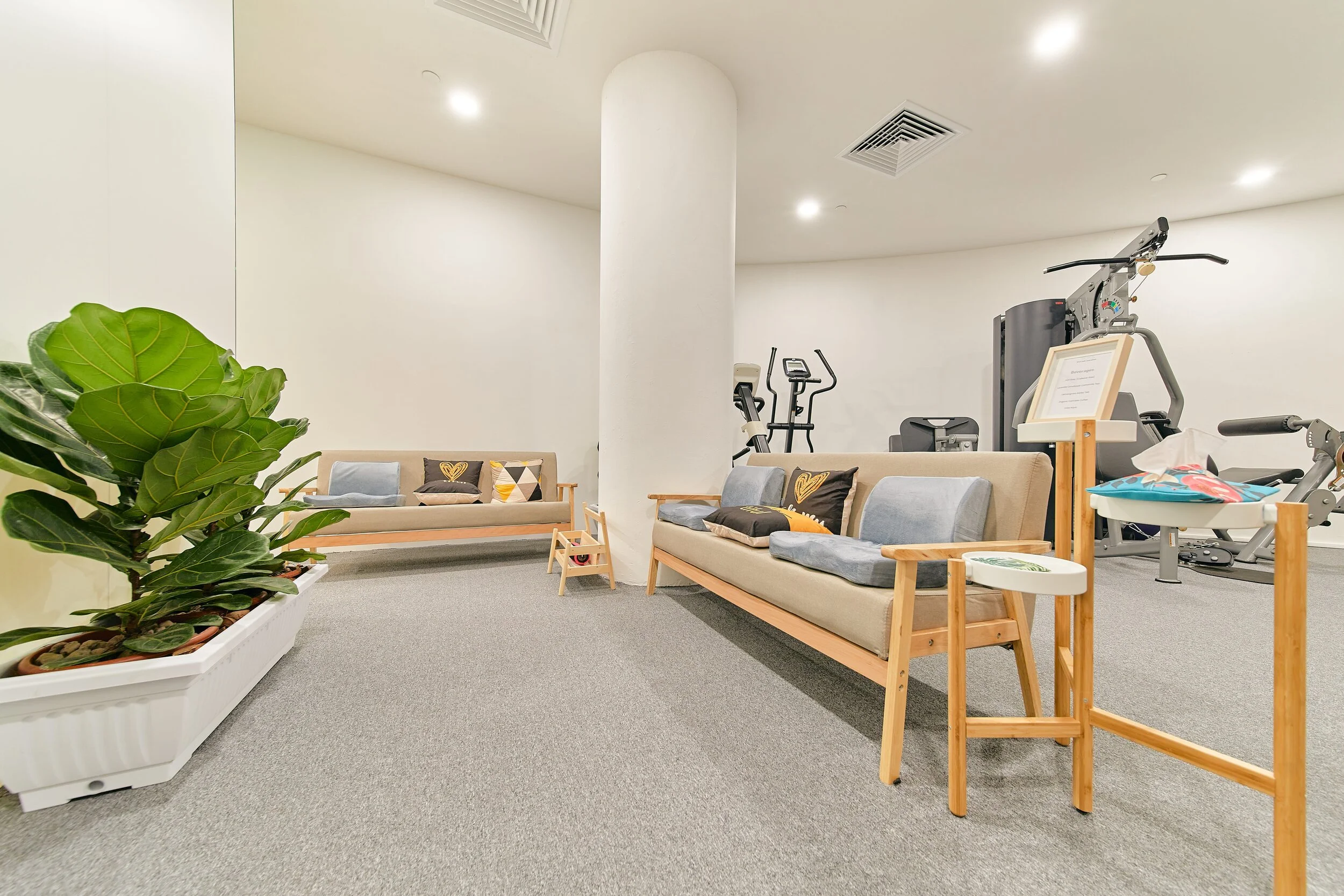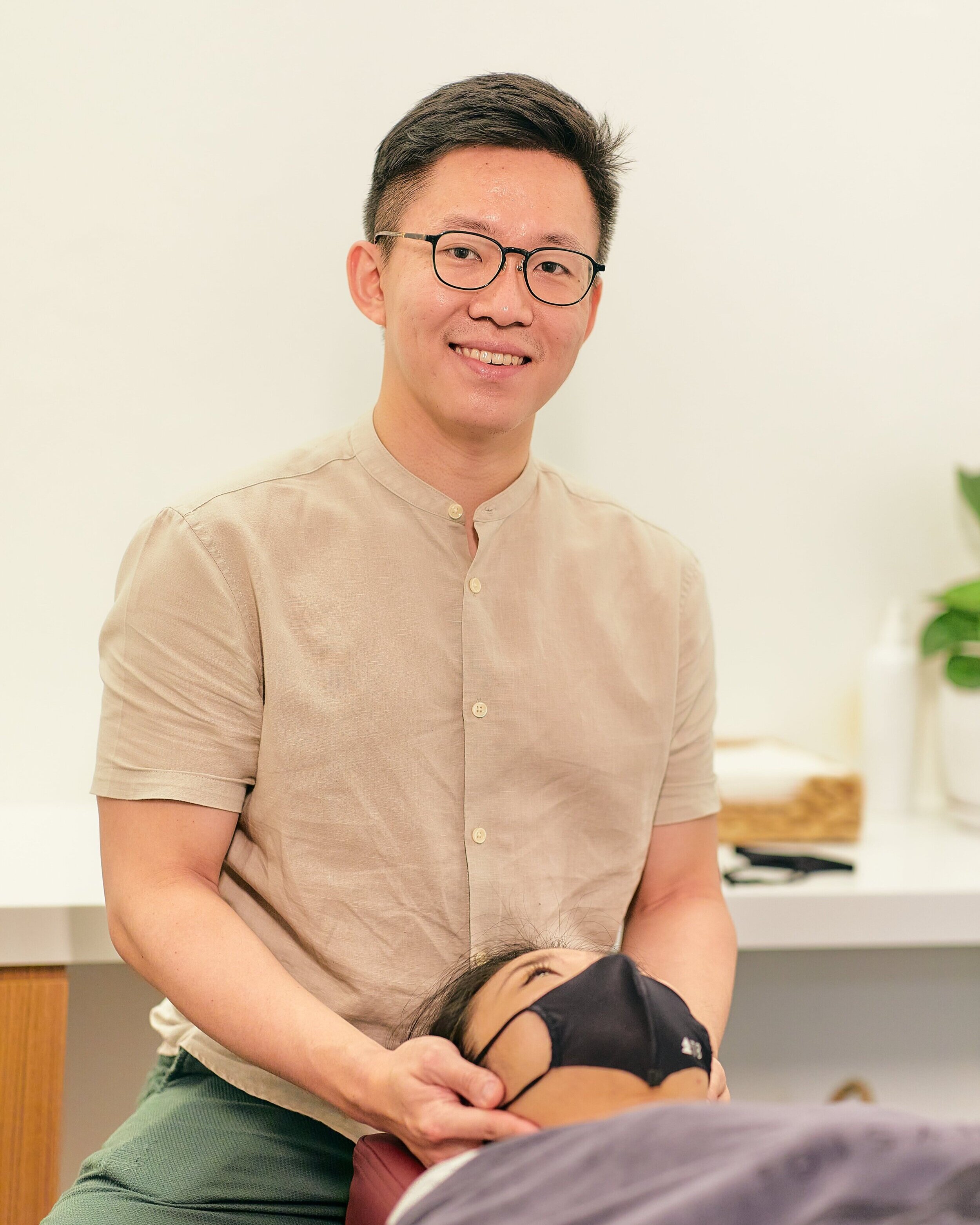Back Pain in Singapore
Back pain in Singapore is more common than you think. In fact, many of our clients come to FHYSIO to treat their back pain!
According to Workplace Health and Safety Institute Singapore, 65% of cases of back pain in Singapore affected young workers between 21 – 40 years old - so age is isn’t really a factor! We spoke to our in-house physiotherapist, Shaun Toh, to share best practices on how to manage your back pain in Singapore.
What causes back pain?
There can be many causes for your back pain. Most of the time, back pain is a symptom of problems with your ligaments, muscles, nerves, or your spine. In some extreme cases, it can also be issues with nearby organs that get mistaken for back problems - for example, your kidneys.
If you are feeling some pain in your lower back, a common reason is muscle strain. If the pain is more severe, it could be pressure on your nerves from the misalignment of your spine. Below are some of the more common causes for back pain in Singapore:
Muscle strain or ligament sprain
A muscle strain is the most common cause for back pain in Singapore. A strain usually occurs from repeated lifting, or sharp, awkward movements, stretching your muscle too far. A sprain can happen when you overstretch a joint and put too much stress on your ligaments. Whether it’s a strain or a sprain, both causes can show similar symptoms.
Inflammation and arthritis
Inflammation is different from mechanical back pain. This kind of back pain happens when your immune system attacks the joints in your spine and it lasts longer. Back pain from inflammation is usually associated with arthritis and a host of conditions called spondyloarthritis, which will require different types of treatments. Arthritis can be attributed to hereditary factors, and people with an immune disorder are usually at greater risk.
Osteoporosis
Due to wear and tear over time, your spine's vertebrae can become more porous and brittle. The decreased bone mass makes your bones weaker and can lead to painful fractures. Spinal osteoarthritis is associated with aging and is slowly progressive.
Deformity
Curvature of the spine can also cause lower back pain if it leads to the breakdown of the spinal discs, facet joints, sacroiliac joints or stenosis.
Herniated or ruptured discs
Discs act as cushions between the vertebrae in your spine. The soft material inside a disk can bulge or rupture can cause the disc to shift and press on a nerve, causing lots of back pain! Discs become more prone to damage as you age as the soft material in the discs may start to dry out, rendering it less capable of cushioning the spine during repeated activities.
Stress on spine and muscles
Your spine does a great job in keep your body upright, but we often take it for granted and put additional stress on it with poor posture and not having breaks. For example, carrying a heavy bag for a prolonged period can cause unnecessary stress on your spine. When this happens, your back muscles overcompensate to support your spine, which can lead to pain and aches.
Common situations that trigger back pain
If your back pain is due to strained muscles or ligaments, here are some daily, common situations that can trigger it:
Repeatedly lifting heavy objects
Bad posture at a desk bound job
Constant sitting and standing
Sports injuries or accidents (e.g. falls)
Twisting your body or experiencing sharp, sudden movements
Carrying heavy backpacks or moving
Obesity
What you can do at home
There are treatments and care that you can administer from your own home before seeking professional help (depending on the severity of your back pain). These can be effective for treating mild muscle strain or to lessen the pain.
Rest
First thing first, rest! Many types of back pain can be improved simply by getting adequate rest and avoiding stressful, strenuous activities. If you don’t see any improvement after a day or two, you should seek other options.
Heat and ice therapy
Using heat and ice can help your back pain in different ways. For example, using a hot water bottle or heating pad can help relax tense muscles and improve your blood flow, bringing more nutrients and oxygen to your muscles.
If you suffer from inflammation, cold treatments can help reduce swelling and prevent it from worsening. Just make sure that you protect your skin while applying these treatments!
Modified activities
If you need to stay active, reduce or break up your time spent in positions that aggravate the back pain. For example, if sitting for too long puts a lot of stress on your back, stand up and go for a quick walk or stretch every 20 or 30 minutes. This will create a healthier balance for your body
Over-the-counter medication
If you need something to address the pain quickly, you can use over-the-counter (OTC) medications. Common medications are aspirin, ibuprofen, naproxen, and acetaminophen. Aspirin, ibuprofen, and naproxen are anti-inflammatory medicines – which help to reduce the back pain cause by strained muscles or nerves.
Treatment options for back pain
Stretching and exercise
Stretching and light exercise can be part of a back pain treatment program. By stretching your muscles, they become more flexible to handle your movements without injury. You might also be asked to perform simple exercises that strengthen your core muscles that support your spine (abdominal, hips, glutes etc.). The McKenzie method is a popular exercise that extends your spine through core muscle strength.
Massage therapy
According to Harvard, massage therapy can offer additional relief for your back pain and help it heal quicker. With the right massage therapy, it improves your blood circulation and aids muscle recovery. Furthermore, it relaxes your muscle and increases its range of motion. Massages also lead to increased endorphins which are highly effective in managing chronic pain.Finding the right massage therapy can sometimes be difficult. There is a certain level of required training and experience to understand how to treat your back pain. At FHYSIO, our massage therapy begins with a complimentary assessment by our in-house physiotherapist who personalizes the therapy and ensures it is safe for your body condition.
Physiotherapy or chiropractor
Patients can also be recommended to some physical therapy like physiotherapy or a chiropractor as an initial conservative, non-surgical treatment. A physiotherapist will diagnose your back pain and put together a rehabilitation program to decrease your pain, increase functionality and prevent any future back pain issues.
We highly recommend seeing a physiotherapist for a couple reasons. One, you block uninterrupted time dedicated to exercising and healing your body. Two, the mechanics of many of those exercises and stretches are hard to do on your own, so having a physiotherapist next to you makes sure you are doing it right and not putting additional pressure on your body. Lastly, it is a great way to get educated so you can eventually manage your routine indefinitely.
Tuina or acupuncture
For those interested in Traditional Chinese Medicine (TCM), tuina and acupuncture are popular treatment options. According to TCM theory, pain can originate from blockages of qi and energy in your body. Tuina and acupuncture helps to remove those blockages and encourage better circulation again.
Muscle relaxants or pain medications
Depending on the cause of your back pain, you might be prescribed muscle relaxants or pain medications. Muscle relaxants help loosen your muscles and increase their mobility, relieving any pain from tightness or spasms. Another treatment could be opioids or painkillers, which alters the pain signals sent to your brain. This is most commonly used for intense, acute pain or after an operation.
Steroid
Steroid injections may be used to help lessen pain and reduce inflammation around a nerve. This is usually used in conjunction with other treatments so as to help manage the pain while allowing you to continue with a comprehensive physiotherapy or rehabilitation program.
Back braces
A back brace can be used to help support your back and reduce pain. Catering to different severity of back pain, there is a wide range of braces out there ranging from flexible, semi-rigid, and rigid. By using the right back brace, it can address your muscle strains and help with any post treatment healing.
Surgery
In more severe cases, surgery may considered if your back pain doesn’t improve after 6 to 12 weeks of non-surgical treatments. Depending on the cause of your back pain, there can be different types of surgeries from minimally invasive procedures (like a microdiscectomy for a herniated disc) to spinal fusions. Speak with your doctor to understand your options, as new technology is constantly being developed and utilized.
How can FHYSIO help?
FHYSIO comprises a team of physiotherapists and wellness experts specialized to help you feel great and get back to living the life you loved. Whether you strained your back muscle or hurt it from a fall, we have the right care and treatment for you.
Through a thorough diagnosis and consultation with our Physiotherapist, we will be able to customize a treatment plan with techniques including manual therapy, clinical massage, soft tissue mobilization, dry needling, range of motion and exercise therapy. You will also have access to our in-house advanced therapy equipment to help with your recovery!
Meet your Physiotherapist
Shaun Toh is a registered physiotherapist in Singapore specializing in acute care, sports and musculoskeletal injury management.
In 2009, Shaun first started out by providing sports massages for school athletes and triathletes to hone his hands-on skills during his schooling days. After graduating, he joined National Heart Centre of Singapore as a Physiotherapist specializing in acute care of patients in cardiovascular medicine, cardiothoracic surgery, outpatient cardiac rehabilitation and musculoskeletal injuries.
Shaun later pursued his studies at Trinity College, Dublin and graduated with a Bachelor (Hons) in Physiotherapy. Whilst in Dublin, Shaun had the opportunity to be trained by their local physiotherapists on various techniques for musculoskeletal, spine and neurological conditions.
Giving credits to his steadfast reputation as a clinician physiotherapist, Shaun was later headhunted by Raffles Hospital. During his stint, Shaun worked with high level athletes from around the world, widening his scope of practice in sports injury management and treatment.
Shaun is frequently invited overseas by various organisations to give courses in the area of Sports Massage, as well as by luxury resorts to be the in-house Physiotherapist for their VIPs. Active in the sports scene, he was previously the Chief trainer for Safra Running Club (TP) and in-house Physiotherapist for Brazilian Jiu-Jitsu Singapore. Shaun also holds certification in other areas such as Dry Needling and DMA Clinical Pilates.
